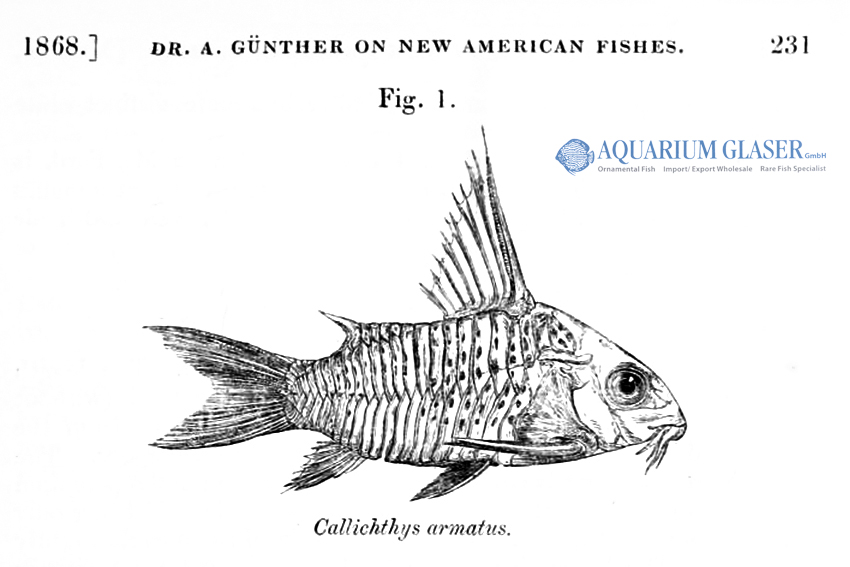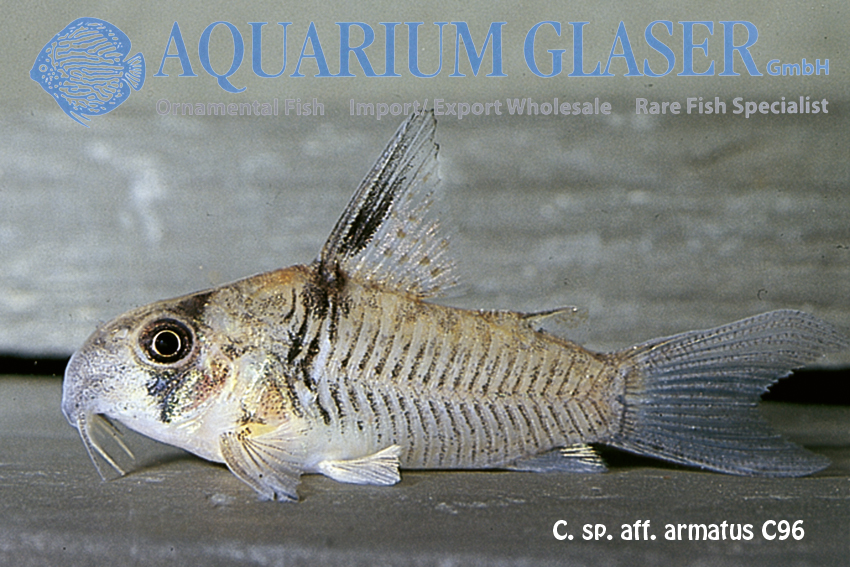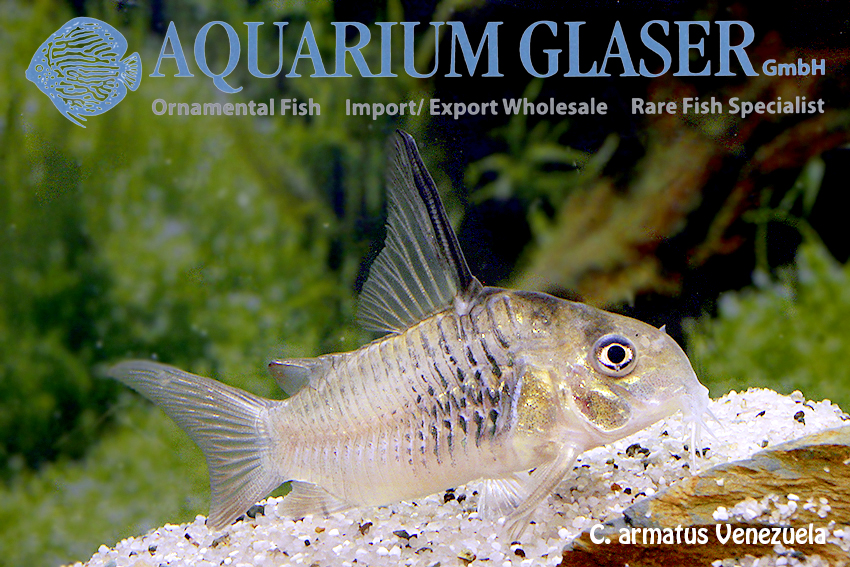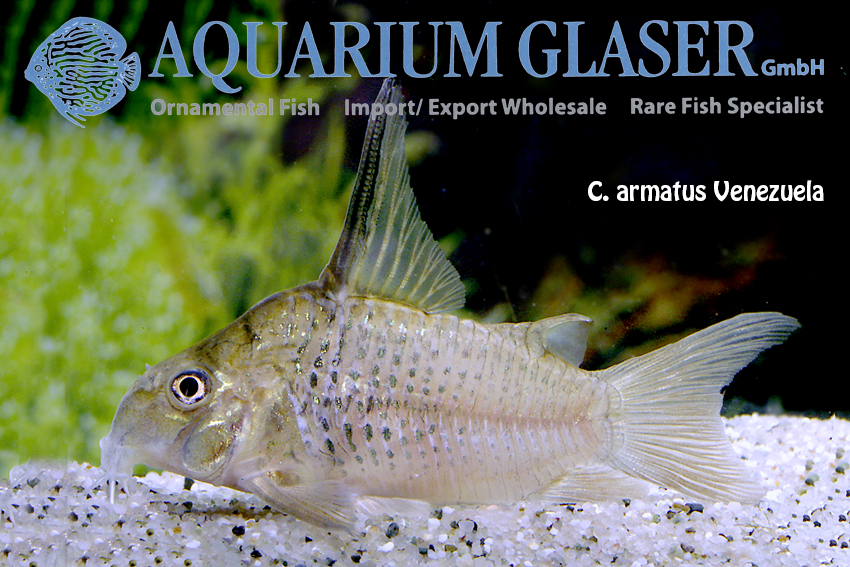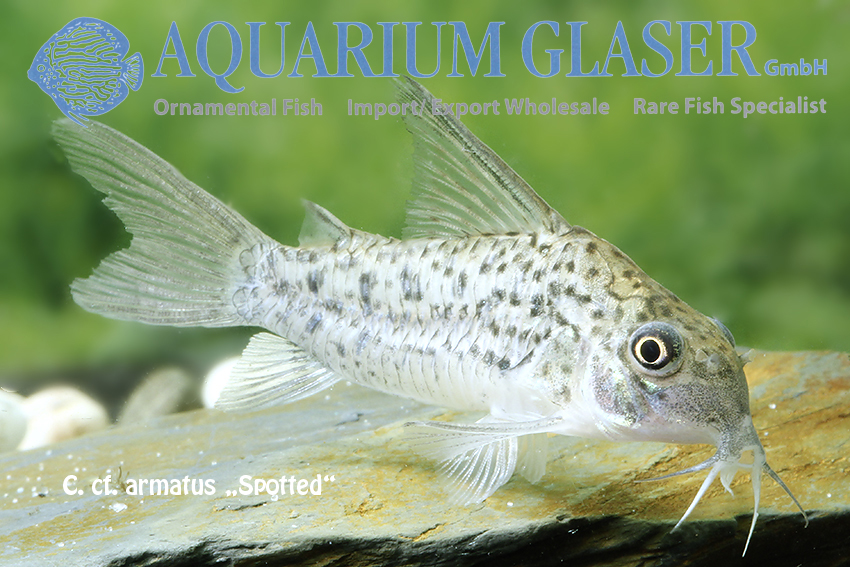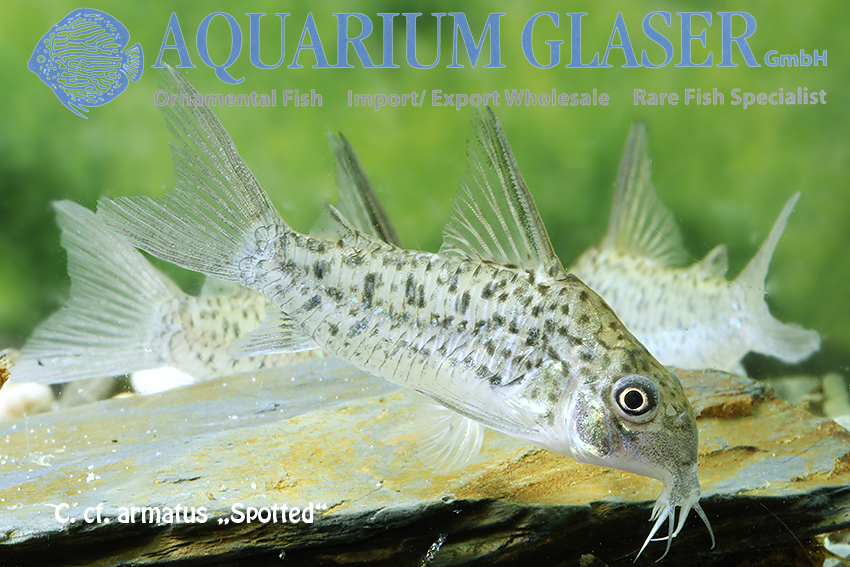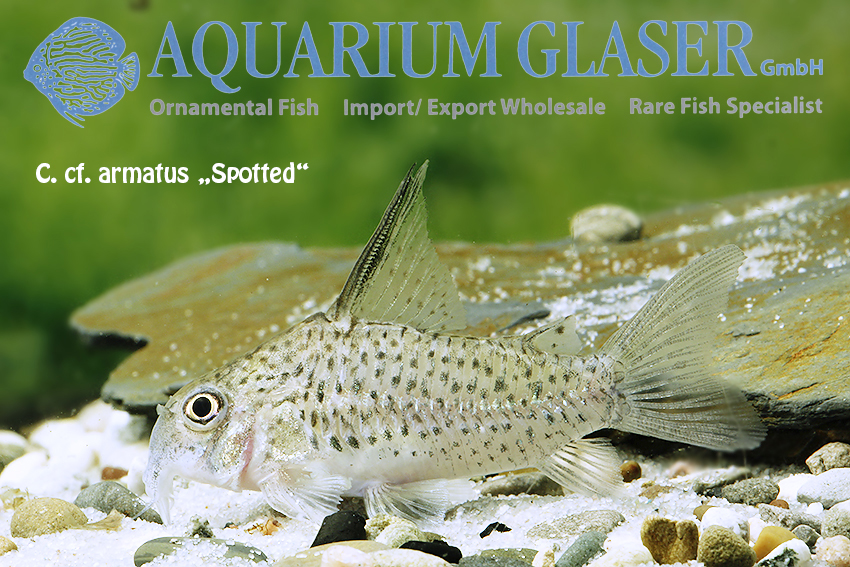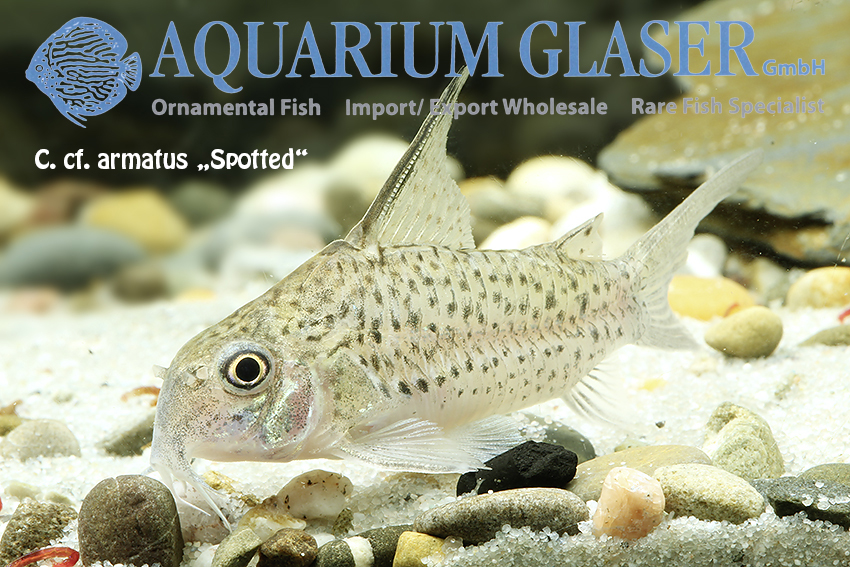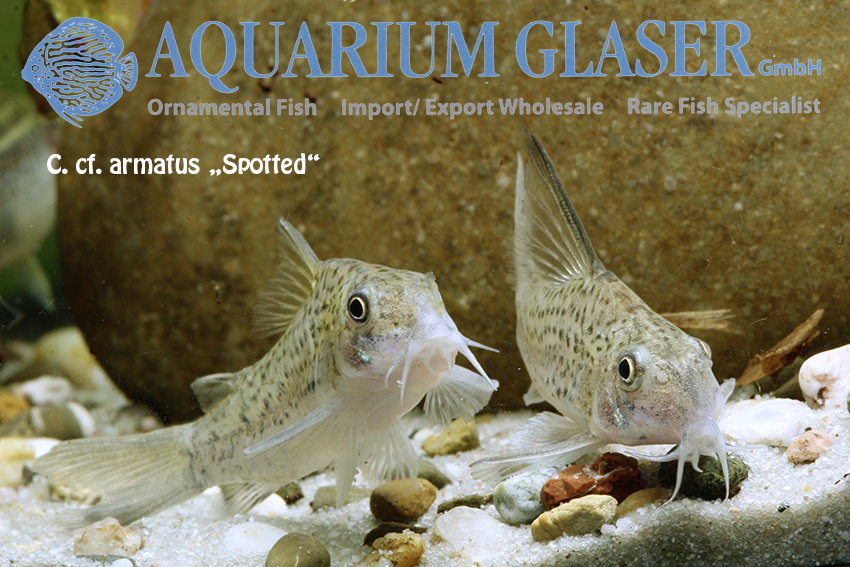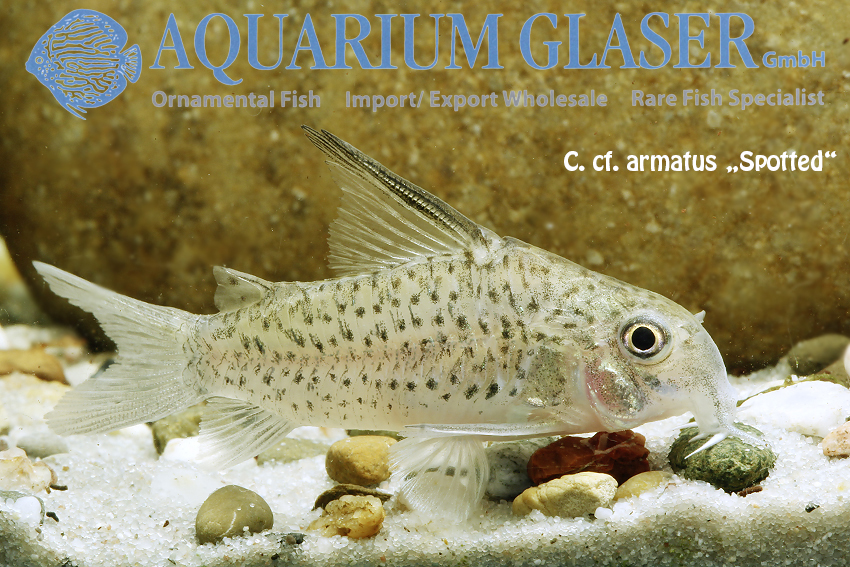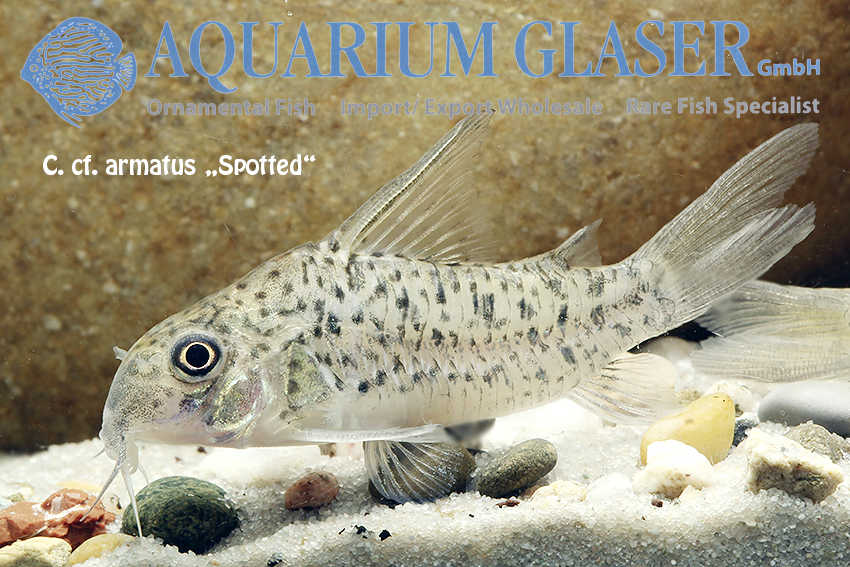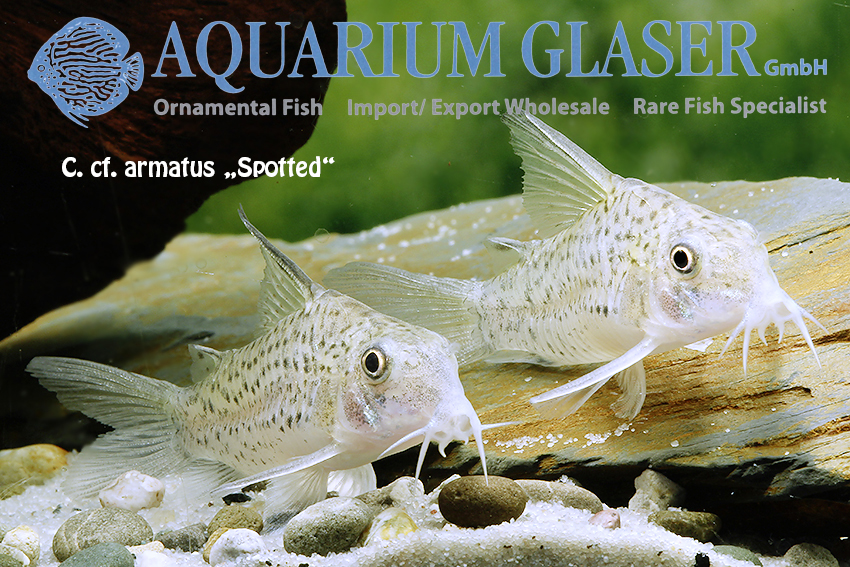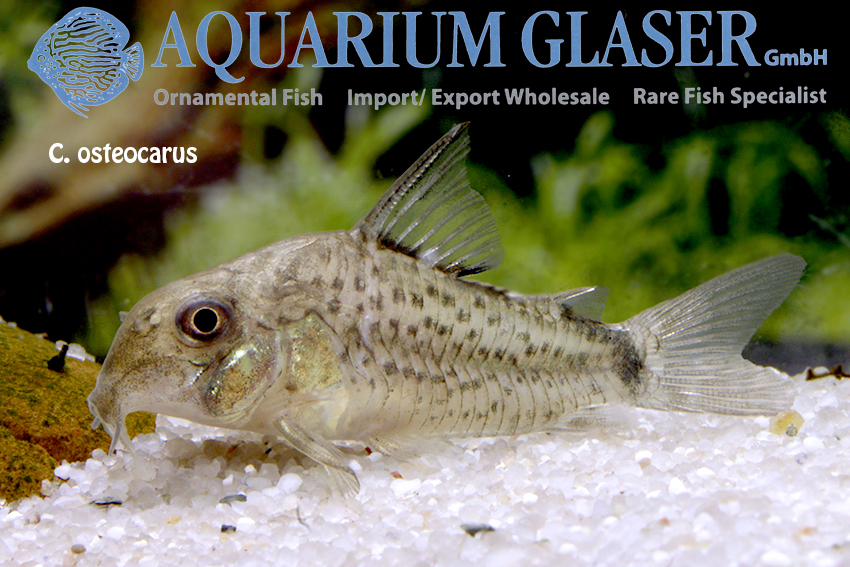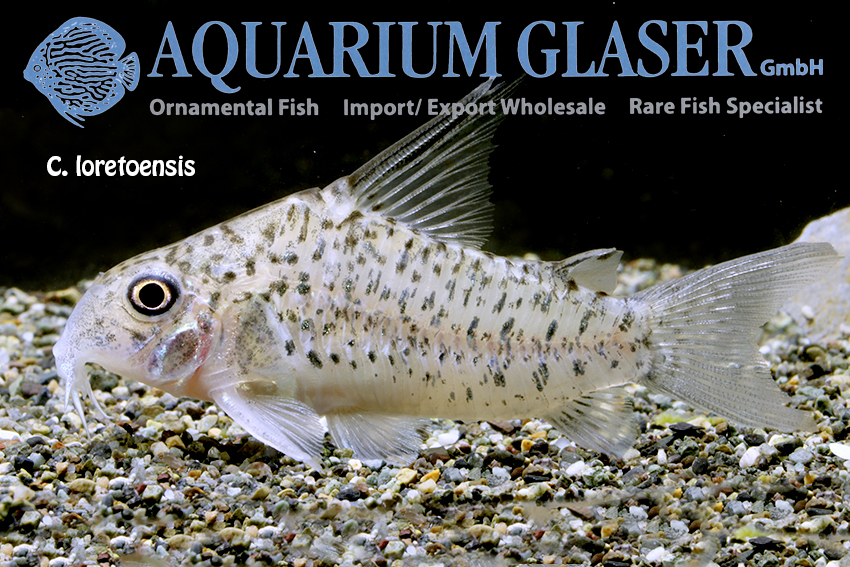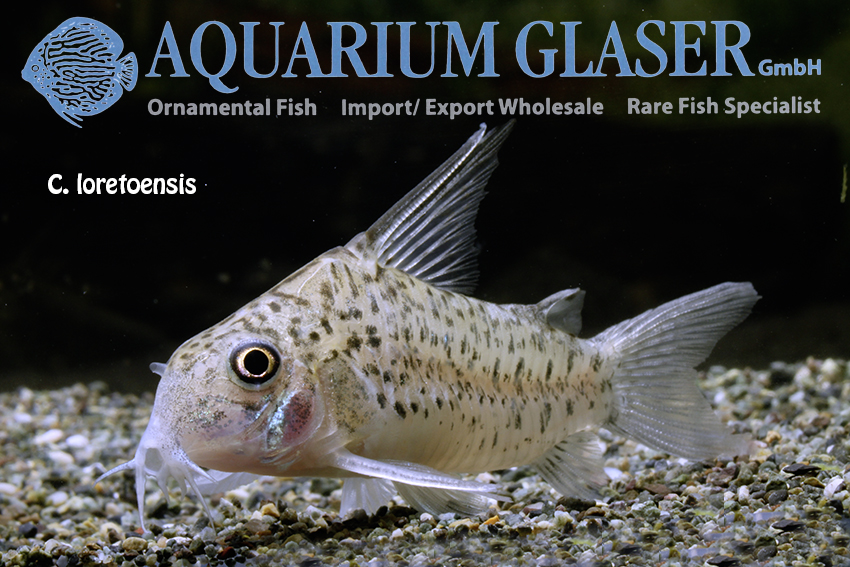From Colombia we received a nice Corydoras species, which threw us into some confusion during identification. They were sent as C. armatus, a species described from the Rio Huallaga, a right-bank tributary of the Rio Maranon (the larger of the two headwaters of the Amazon) in Peru. C. armatus is a conspicuously high-backed species with a black, particularly elongate dorsal-fin spine, and is one of the first species of Corydoras ever known to science. The species was described in 1868 as Callichthys armatus.
In the hobby, a scientifically undescribed species from Peru was initially thought to be C. armatus, which today bears the C number 96 and has a conspicuous dark stripe running vertically below the dorsal fin. In addition, this species has a distinctive eye mask. It originates from the Rio Nanay.
There is also a very close resemblance to Corydoras loretoensis, which is less high-backed compared to C. armatus. C. loretoensis comes from the province of Loreto in Peru.
Finally, in the border area of Brazil and Bolivia, in the upper Rio Madeira basin (Rio Abuna), there is a Corydoras optically not separable from C. armatus, which is traded as C. sp. “dorsalis” or C. sp. “ogawae”. If there were not 2.500 km air-line between both localities, nobody would doubt that the animals should be counted to C. armatus. This fish got the code CW86.
Also the Corydoras armatus, which we sometimes receive from Venezuela, are optically indistinguishable from typical specimens from the Rio Huallaga.
Also very similar is Corydoras osteocarus from Venezuela, which is very rare in the trade. It can be recognized quite well by the short dark band immediately in front of the caudal fin and the much lower dorsal fin.
Back to the Colombian: these animals are in their physique rather of the flat type and we suspected at first, it would be C. loretoensis, which the Colombian supplier had bought in Peru. This was indignantly rejected by the supplier and in the two days of correspondence with the supplier some of the animals also developed a black coloration in the dorsal fin spine which was not seen before. In fact, they now look more like C. armatus than any other species in the complex. We have learned that they originate from the Rio Putumayo, a left-sided Amazon tributary in the border region between Colombia and Brazil.
For our customers: the animals have code 222124 on our stocklist. Please note that we only supply wholesale.
Text & photos: Frank Schäfer





